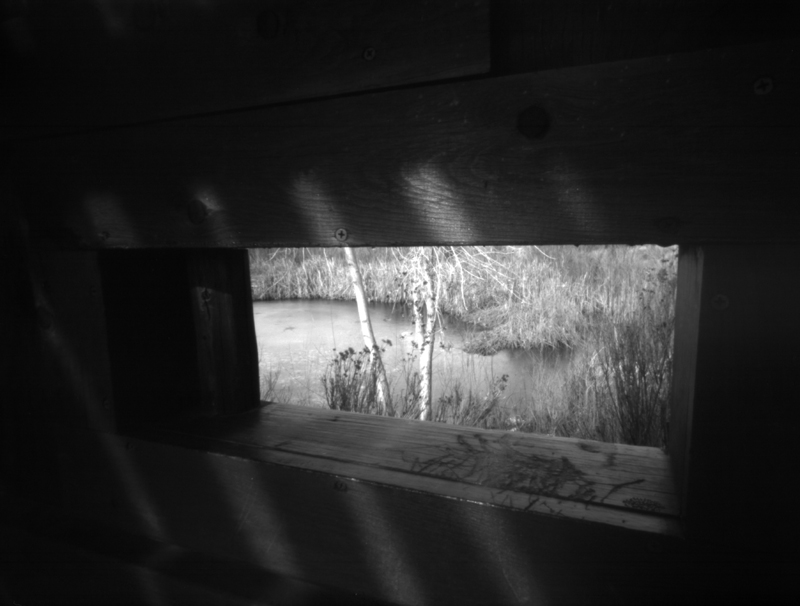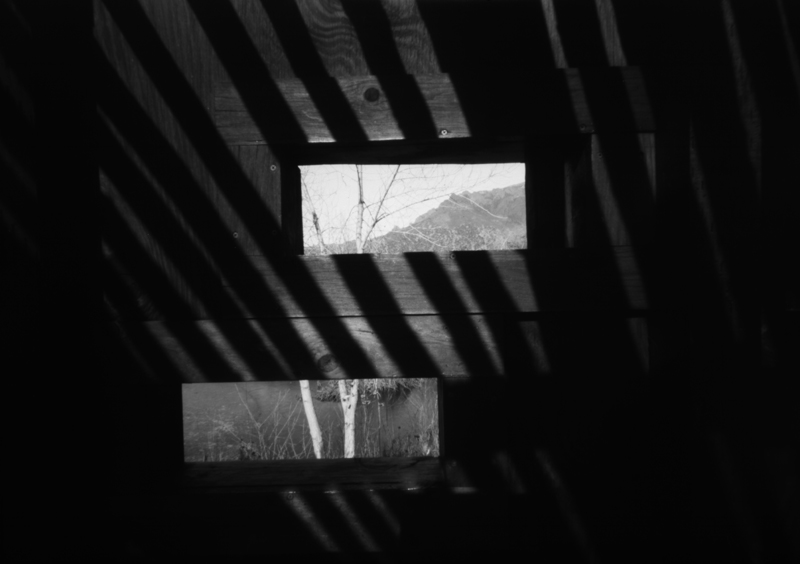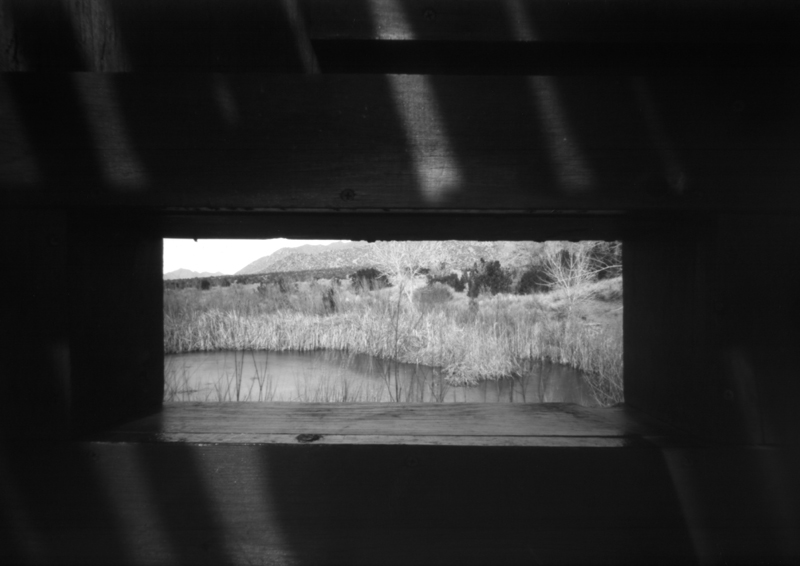
One of my favorite destinations, when I feel like an outdoor hike but don't want to drive too far from home, is the Elena Gallegos Open Space area, part of the City of Albuquerque's Parks & Recreation program. The Elena Gallegos was once part of a Spanish land grant, dating as far back as 1694, that encompassed much of what would later be the north and east portions of the Albuquerque metropolitan area. The current open space area is along the foothills of the Sandia mountains, and includes numerous hiking trails, along with picnic areas that can be reserved for private parties.
One of my favorite parts of the Elena Gallegos is the Kiwanis Overlook, a wooden structure, built by the Kiwanis organization, that serves as an observation area for a small wetlands pond that is a favored destination for birders.
There are several trails one can hike to arrive at the Kiwanis Overlook, the longer trail starting from the eastern-most parking area and winding its way east and north, across a natural arroyo, while a shorter hike starts from a nearby parking lot on the northwest corner of the park.
I've visited this area repeatedly over the years, for the purposes of both hiking and photography. Although I'm not a birder, I've noted in the middle of the day, when the light is sufficient for pinhole photography, the absence of birds in the wetlands pond. Too, the visitation hours of the area, as managed by the city, precludes bird observation in the early morning and late evening, unless special arrangements are made ahead of time. Still, despite the apparent lack of wildlife, daytime visits are a special occasion for me, as the open air and scenic vistas are both calming and inspirational.
The observation blind structure itself is constructed with numerous window-like openings, revealing various views of the wetlands area beyond, each an ideal vantage point from which to aim a camera. After frequent return trips to the area, I began to notice how these window openings themselves began to resemble picture frames, even being constructed of wood, serving to frame a specific vista beyond, each one unique in aspect ratio and view, as if they were but a collage of paintings hung on some wall.

And so I began a series of photographic studies involving the wooden structure itself, its observation viewing ports and the vistas beyond. At the right time of day, sufficient light is available to render visible the textured details of the wooden planks, even with the limited sensitivity of paper negatives employed in pinhole cameras.

It requires a meditative-like concentration to successfully employ these box cameras as a means for creating landscape images, and thus the presence of other visitors to the area can often be a hindrance. It is for this reason that I prefer to plan my visits for the week days, when the majority of people might be busily employed elsewhere. There's also the further advantage that the parking fee on week days is only a dollar, compared to the two dollar weekend fee.
Over the years I have employed both paper negatives and Harman's Direct Positive paper, in both pinhole and glass-lensed large format cameras, with which to study this area, and find myself returning yet again, in search of something I know not what, except that this wildlife observation area is a perfect metaphor for the act of seeing that is uniquely photographic.
No comments:
Post a Comment
Please leave a comment; I will curate them before posting.